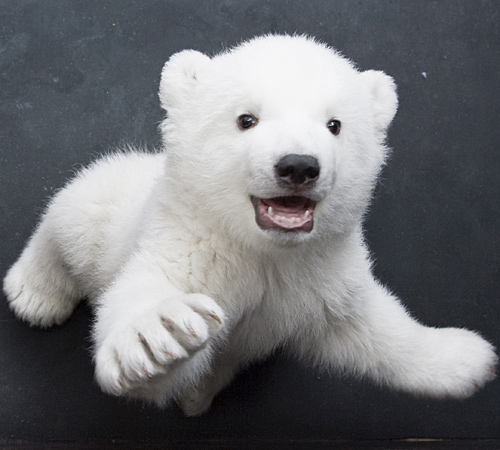Conservation groups sue officials

photo released by the “Tiergarten Nuernberg” zoo Monday shows polar bear cub Flocke trying to climb the walls of her enclosure. Ralf Schedlbauer, The Associated Press
Mar 11, 2008
Last updated on May 12, 2016 at 10:49 p.m.
ANCHORAGE, Alaska – Three conservation groups sued the Department of the Interior on Monday for missing a deadline on a decision to list polar bears as threatened because of the loss of Arctic sea ice.
A decision was due Jan. 9, one year after the U.S. Fish and Wildlife Service proposed listing the animals as threatened under the Endangered Species Act.
Agency Director Dale Hall said in January that officials needed a few more weeks to make a decision. But two months later, no decision has been announced.
Polar bears depend on sea ice for hunting seals, denning and giving birth.
Get The Daily Illini in your inbox!
Conservation groups claim the loss of sea ice due to global warming is accelerating.
“Doing nothing means extinction for the polar bear. That’s what the administration is doing – nothing,” said Kassie Siegel, an attorney for the Center for Biological Diversity and the lead author of the 2005 petition that sought the listing from the federal government.
Her group, the Natural Resources Defense Council and Greenpeace Inc. asked the federal court in San Francisco to order administration officials to make the decision.
Hall said in January he did not like missing the deadline but, “It is far more important to us to do it right and have it explained properly to the public.”
Bruce Woods, a U.S. Fish and Wildlife spokesman in Anchorage, said he could not comment on pending legal action.
“We are still working as fast as we can to get the decision announced,” he said.
Alaska has the only two polar bear populations in the United States: the Beaufort Sea group off the state’s north coast and the Chukchi Sea group, shared with Russia, off Alaska’s northwest coast.
Summer sea ice in Alaska shrunk to about 1.65 million square miles last year, the lowest level in 38 years of satellite record-keeping and nearly 40 percent less ice than the long-term average between 1979 and 2000.
Some climate models have predicted the Arctic will be free of summer sea ice by as early as 2030.
A U.S. Geological Survey study predicted polar bears in Alaska could be wiped out by 2050.
A decision to list polar bears as threatened due to global warming could trigger consequences beyond Alaska.
Opponents fear a recovery plan would subject projects such as new power plants to review if they generate greenhouse gases that add to warming in the Arctic. Conservation groups hope that’s the case.
“We believe if and when the polar bear is listed, all federal agencies approving major sources of greenhouse gas emissions will have to look at ways to reduce those emissions to protect polar bears,” Siegel said.
Last week, the Interior Department’s inspector general said it was beginning a preliminary investigation into why the department had not made a decision.
The inquiry was opened in response to environmental groups and would determine whether a full-fledged investigation was warranted, the department said.





